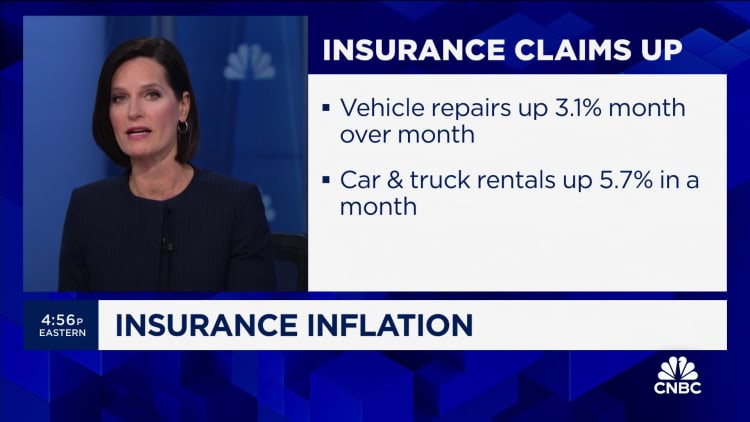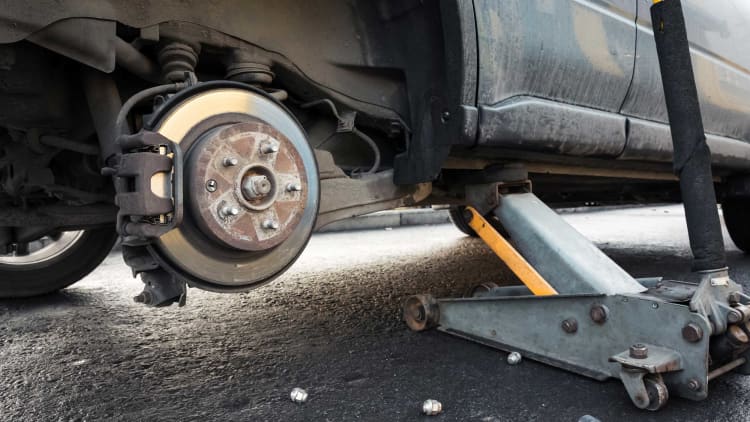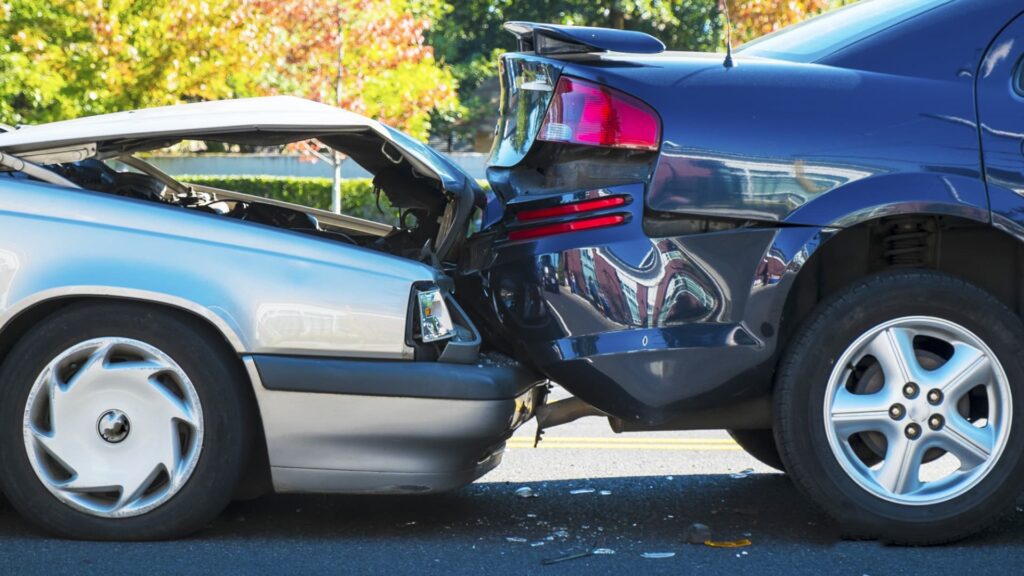Robert Crum | Getty Images
DETROIT – Sky-rocketing auto insurance costs helped contribute to faster-than-expected inflation in March and added to rising costs for U.S. car owners.
On a monthly basis, auto insurance rates as part of the Consumer Price Index rose 2.7% unadjusted, while year-over-year they rose 22.2%, according to data released Wednesday. The index is a key measure of inflation and a broad measure of the cost of goods and services throughout the economy.
Auto insurance costs have been rising for some time, growing every month as part of the index since December 2021. Since then, costs have increased by 45.8%, according to the U.S. Bureau of Labor Statistics. However, auto insurance still represents a small portion of the CPI, with a weight of 2.85%.
This rise comes in addition to historically high prices for new and used cars since the coronavirus pandemic. Vehicle repairs are also becoming increasingly more expensive due to shortages in the supply chain, increased wages for mechanics, and additional technologies in vehicles such as microprocessors, cameras, and other sensors — all of which contribute to higher vehicle and insurance costs.
“There's not one factor, but I think the biggest factor is a mix of new cars and more expensive cars, so if you total your car, the replacement cost is really high, and fender bends are very expensive right now,” Sean Tucker said. Senior Editor at Kelley Blue Book Vehicle Evaluation and Automotive Research. “Technology in cars is a very specific problem.”
Instead of having to replace a plastic or steel bumper on many vehicles, a simple fender bend can now damage cameras, proximity sensors and various other technologies used for newer safety features and tools such as cruise control, parking and emergency braking.
“Premiums have gone up because the cost of what goes into auto insurance is going up,” David Sampson, CEO and president of the American Property Casualty Insurance Association, told CNBC. “There's a long period of time between when trends emerge and companies see those loss trends exist. Then it takes a long time for them to build that into their price order files.”
Earlier this year, Sampson himself sustained minor damage to the bumper of a 2024 pickup truck on his property, which he says cost him $1,800 to repair or replace.
“All the technology we have come to rely on makes it very expensive to replace or repair these vehicles,” said Sampson, whose organization is the main national trade association for home, auto and business insurers.

The inflation insurance cost increases come more than two years after the Biden administration largely blamed used car prices for pushing inflation higher in January 2022.
Mitchell, an automotive software provider specializing in the collision repair and auto insurance sectors, said repair costs were increasing at an annual rate of 3.5% to 5% before the coronavirus pandemic. As of 2022, increases are 10% or more, with the average salvage appreciation for a vehicle at $4,721 in 2023.
Consumers and businesses alike are not happy with the increases. J.D. Power reported in June that auto insurers lost an average of 12 cents on every dollar of premiums they collected in 2022 — the worst performance in more than 20 years — prompting them to raise rates at the expense of customer satisfaction.
“What I always mention is that insurance is based on actuarial science, so it's not just that insurance companies decide they want to increase premiums,” Sampson said. “Filings must be based on actuarial loss trends in their rate requests in each state.”
The cost of vehicle insurance — which is mandatory in almost every state — varies depending on the provider, driver, coverage, and location. Almost all states have minimum requirements for liability coverage, but there are a number of other coverages that may or may not be required in a particular state, according to Progressive Insurance.
The list of optional and mandatory coverage areas can be very long and expensive for drivers, prompting many insurers to offer usage-based insurance, or UBI, programs that determine the cost of a policy based on driver behaviors using telematics data.
The insurer's new customers have a UBI participation rate of 26%, according to a U.S. auto insurance study conducted by J.D. Power in June.
Now in its 24th year, the study found that use of universal basic income more than doubled from 2016 to 2023, with 17% of auto insurance customers participating in such programs. Price satisfaction among customers participating in these programs is 59 points higher on average than among nonparticipants, according to J.D. Power.
Usage in such programs is expected to increase as costs rise and insurers offer discounts or special rates for safer drivers, according to insurers.
Based on a J.D. Power survey, UBI programs from Geico, Progressive, State Farm and Liberty Mutual were rated above average by customers. USAA, which serves all branches of the military and their families, ranked highest.
The J.D. Power study also found that cost increases have dropped customer satisfaction with auto insurers to the lowest level in more than 20 years.
“Overall customer satisfaction with auto insurers has declined this year as insurers and drivers come face to face with the realities of the economy,” Mark Jarrett, director of insurance intelligence at J.D. Power, said in a June statement.
– CNBC's Robert Ferris and Jeff Cox contributed to this article.

